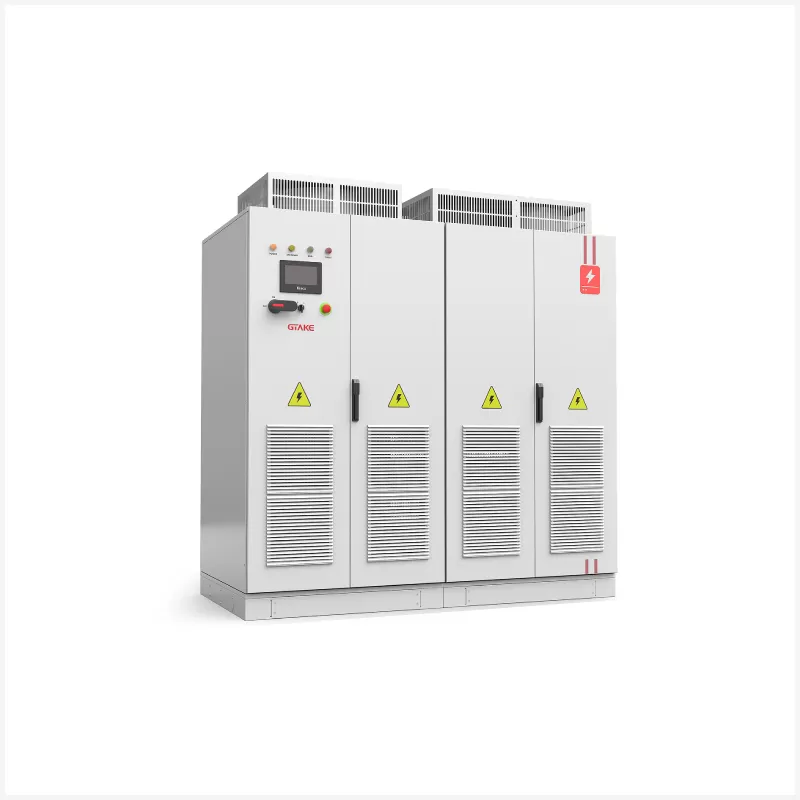Electric motors are fundamental components in a variety of applications, from household appliances to industrial machinery. While traditional motors operate efficiently within their rated speeds, there are situations that demand higher speeds and greater flexibility. This is where field-weakening control becomes essential. This technique allows electric motors to exceed their rated speeds by reducing the magnetic field strength, enabling enhanced performance, particularly in Variable Frequency Drives (VFDs). This article delves into the principles and applications of field-weakening control, focusing on its integration with VFD technology.
What is Field-Weakening Control?
Field-weakening control is a technique designed to enable motors to operate at speeds above their rated capabilities. By weakening the magnetic field within the motor’s stator, the back electromotive force (EMF) can be reduced, allowing the motor to rotate at higher speeds. This method is especially critical in applications where speed is paramount, such as in electric vehicles and industrial automation.
Historically, the concept of field weakening emerged to address the limitations of fixed-speed motors in specialized applications, such as traction in electric trains. Over the years, advancements in motor control technologies have refined this technique, expanding its application across various industries.

Basic Principles of Field-Weakening Control
At the core of field-weakening control is the relationship between magnetic flux and motor performance. The magnetic flux in the motor’s air gap is directly proportional to the stator current. When the magnetic field strength is reduced, the back EMF generated by the motor also decreases. This reduction allows more of the available voltage to be utilized for accelerating the motor instead of overcoming back EMF.
The torque-speed characteristic curve during field weakening shows how torque and speed interact under different operating conditions. Initially, as speed increases, torque remains constant until the back EMF matches the applied voltage, limiting further acceleration. Field-weakening control enables the motor to operate in a regime where speed can continue to rise, albeit with reduced torque.
Field-Weakened Control in VFDs
Variable Frequency Drives (VFDs) play a crucial role in implementing field-weakening control. VFDs adjust the frequency and voltage supplied to the motor, facilitating precise control over speed and torque. By utilizing field-weakening techniques, VFDs can enhance the performance of electric motors, allowing them to operate efficiently at higher speeds.
The primary advantage of integrating field weakening with VFD technology is the ability to achieve extended speed ranges without compromising efficiency. In applications where high speeds are necessary, such as conveyor systems or high-speed pumps, field-weakening control provides the necessary flexibility and performance optimization.
Main Methods of Field-Weakening Control
Field Oriented Control (FOC)
Field Oriented Control (FOC) is one of the most effective methods for implementing field-weakening control. This technique allows independent control of two current components: the d-axis (flux-producing) and the q-axis (torque-producing). By manipulating these components, FOC enables the motor to operate efficiently in both constant torque and field-weakening regions.
In a typical FOC scheme, the goal is to maintain the d-axis current at zero during normal operation, allowing for maximum torque generation through q-axis control. When field weakening is required, the d-axis current can be adjusted to a negative value, reducing the magnetic field strength and allowing for increased speed.
Negative d-axis Current
Another method of field-weakening control involves driving the d-axis current negative. This approach weakens the magnetic field created by the rotor, thus reducing back EMF and enabling higher motor speeds. By adjusting the d-axis current, the motor can effectively operate at speeds beyond its base rating.
This method is particularly beneficial in applications where high speed is essential but where torque requirements can be relaxed. For instance, in electric vehicles, the ability to reach higher speeds without substantial torque loss can enhance performance during acceleration.
Vector Control Techniques
Vector control, often synonymous with field-oriented control, is a technique used to achieve dynamic torque and speed responses in AC induction motors. By controlling the d and q current components independently, vector control optimizes performance in various operational scenarios.
In practice, this means that during field-weakening operations, the motor can be driven to its maximum speed using the available voltage while keeping the torque at an acceptable level. This flexibility is critical in applications where performance must be balanced against energy consumption.

Advantages and Challenges of Field-Weakening Control
Advantages
The primary benefits of field-weakening control include:
- Extended Speed Range: Field weakening allows motors to achieve speeds significantly higher than their rated speeds, expanding their applicability in various industries.
- Improved Motor Efficiency: By optimizing the use of available voltage, field-weakening techniques can lead to better energy efficiency in high-speed operations.
- Enhanced Control Flexibility: The ability to dynamically adjust the operating parameters of the motor provides improved control, particularly in applications with variable load conditions.
Challenges
Despite its advantages, field-weakening control does present some challenges:
- Increased Losses: Operating in field-weakening mode can lead to increased thermal losses in the motor, necessitating careful thermal management.
- Reduced Torque at High Speeds: While speed can be increased, the trade-off is often a reduction in available torque, which may limit performance in certain applications.
- Potential Stability Issues: Managing the transition between normal operation and field-weakening mode requires sophisticated control algorithms to ensure stability and performance.
Real-World Applications of Field-Weakening Control in VFD Systems
Field-weakening control is widely utilized across various sectors, including:
Electric Vehicles: In electric vehicles, field weakening enables higher speeds and enhances the overall driving experience, allowing for efficient acceleration and improved range.
Wind Turbines: Wind turbines benefit from field-weakening control to optimize performance across varying wind conditions, enhancing energy capture and efficiency.
Industrial Machinery: In manufacturing processes, field-weakening techniques improve the performance of conveyor belts, pumps, and other equipment that require variable speed operations.
These applications demonstrate how field-weakening control not only enhances motor performance but also contributes to energy savings and operational efficiency.
Future Trends and Innovations
The landscape of field-weakening control is continually evolving. Ongoing research is focused on refining techniques to improve efficiency and expand their applications. Innovations in VFD technology, including advanced control algorithms and sensor integration, are poised to enhance the effectiveness of field-weakening strategies.
As the demand for efficient and flexible motor solutions grows, the potential applications for field weakening will continue to expand, offering new opportunities in emerging technologies and industries.
Conclusion
Field-weakening control is a critical technique in modern electric motor technology, particularly when integrated with Variable Frequency Drives. By enabling motors to exceed their rated speeds while maintaining efficiency and performance, field weakening plays a vital role in various applications. As technology advances, continued exploration and optimization of field-weakening methods will further enhance motor performance and open new avenues for innovation in the electric motor landscape.
At GTAKE, we drive innovation in motor control and clean energy solutions. Our advanced technologies in variable frequency drives and EV motor controllers ensure efficiency and reliability. Discover how we can elevate your projects and contribute to a sustainable future!
